Impulse: Anna Rudat's theme evening
To get into the topic of "Digitization", we came up with a short talk show, "Anna Rudat's theme night", as an impulse. In the first part of our themed evening, I discussed the topic with my guests Sascha and Oliver. Of course, each guest had their own thesis on digitalization.

After the first 10 minutes, the discussion was opened up to the audience as part of a fishbowl discussion. This gave us the opportunity to hear not only the opinions of Sascha and Oliver, but also your ideas and theses. We recorded all the theses and after the break we discussed some of them in more depth in small groups. I would like to share the output of this discussion with you after a few impressions of the evening 🙂
Digitalization is more than Industry 4.0
This discussion started with the question of what digitalization actually is. Basically, we established that digitalization has something to do with people and technology. However, digitalization means something different for every company, while for some companies it may be the mere mapping of a process in a software solution, for other companies it is a completely new business model. But no matter how a company understands digitalization, both have to do with a process/business model that is evaluated by the customer. If the process or the new business model changes our behaviour in the long term, we can call this digitalization.
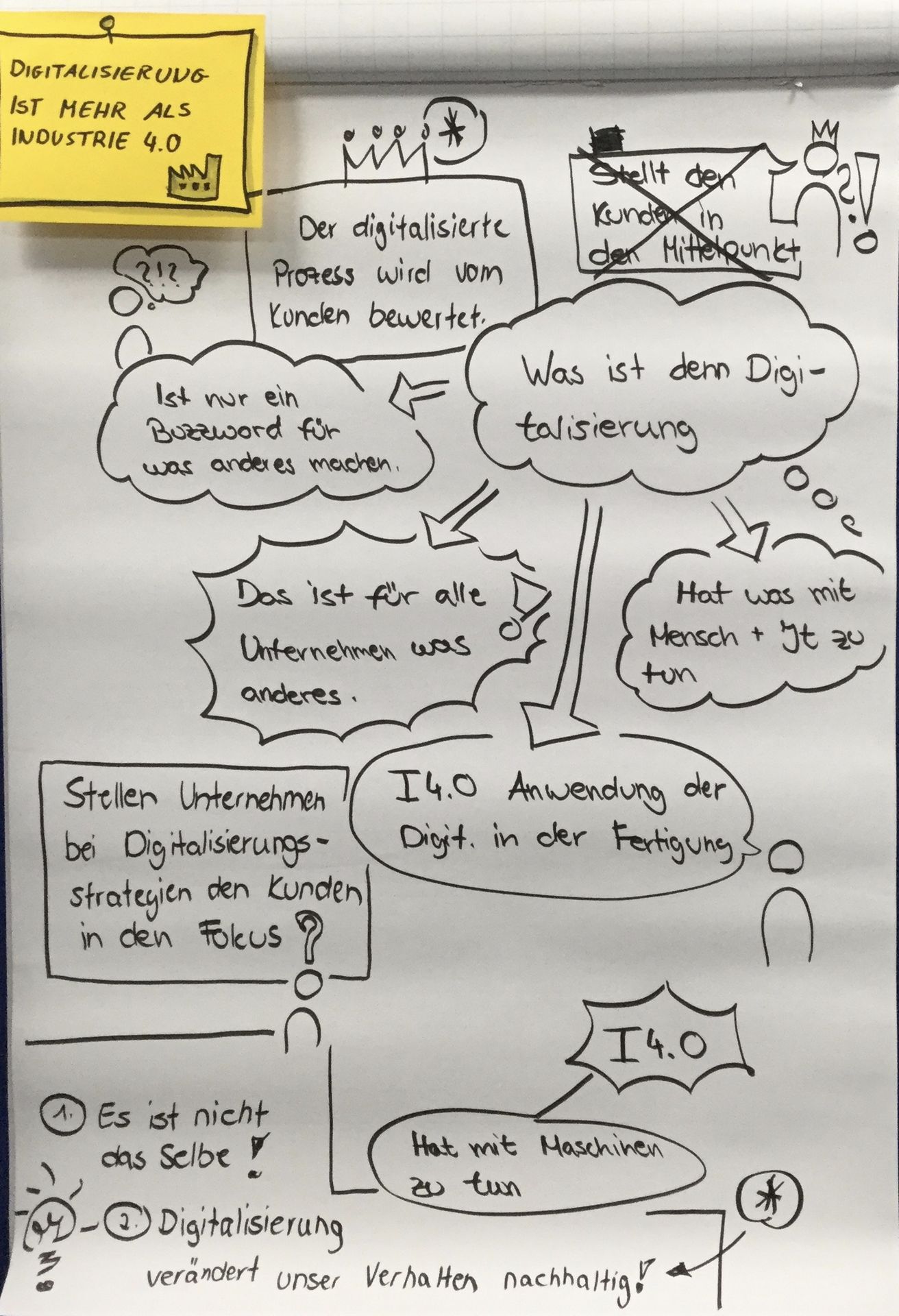
Industry 4.0 on the other hand, represents an area of digitalization that refers to the application of digitalization to manufacturing. Industry 4.0 is therefore not a synonym for digitalization, but a subset of digitalization. Industry 4.0 is concerned with networking machines and enabling them to be controlled remotely. From cars that report when they need to be serviced and suggest workshop appointments by email, to production lines that independently manufacture products and recognize and adapt to different product types.
Does digitalization need agility?
One much-discussed thesis was the question of whether digitalization actually needs Agility? And if so, why? The fundamental question here was also what digitalization is, and this group also agreed on this: Digitization is the interaction between man and machine. Since the digitalization market thrives on customer feedback, agile methods are the ideal solution. As they allow customer feedback in short cycles. Digitalization therefore benefits from agility. In principle, agility in itself does not require digitalization.
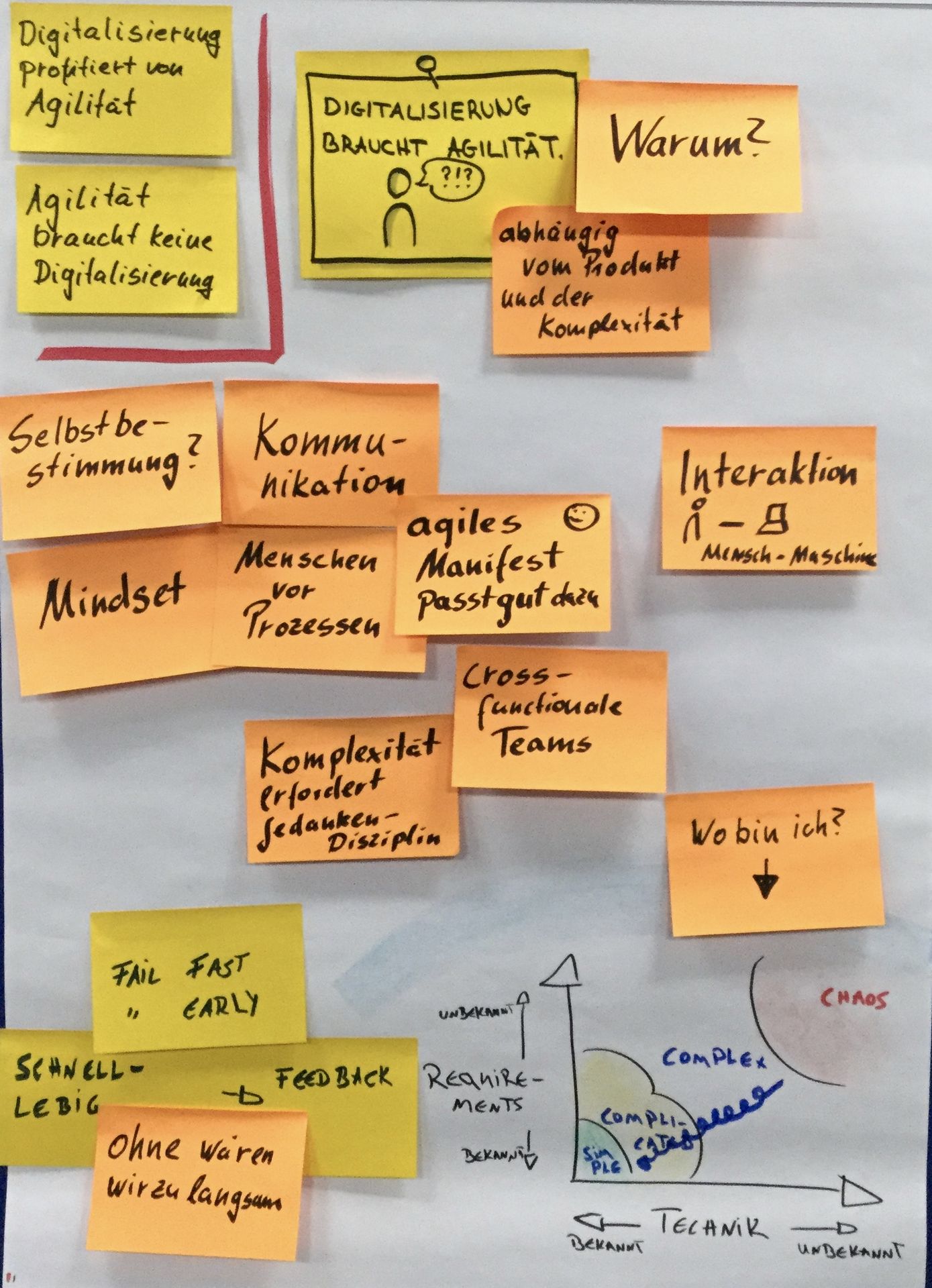
Digitization with labs fails
The group started the discussion of this thesis by asking who agreed, was undecided or disagreed. As the flipchart above left shows, the survey resulted in an equal distribution.
Labs are usually founded when a new market or a new customer segment is to be developed. The motivation to outsource this development usually stems from the fact that there is not enough time in day-to-day business. Or the new product cannot be mapped in the existing structure. This is why organizations give these new ideas a protected space with labs. In the protected space of the lab, there is peace and quiet from day-to-day business and the new ideas can be developed in a focused manner. So far so good, but who is allowed into the lab?
This decision can be made in two different ways, either the management decides which idea should go into a lab and with which people, or there is a driver of the idea who gets the go-ahead from the management to set up the lab and assembles his team himself. In principle, we believe that the second method promises more acceptance and success. In this case, the lab is staffed with people who are motivated to implement the idea and see added value in the idea.
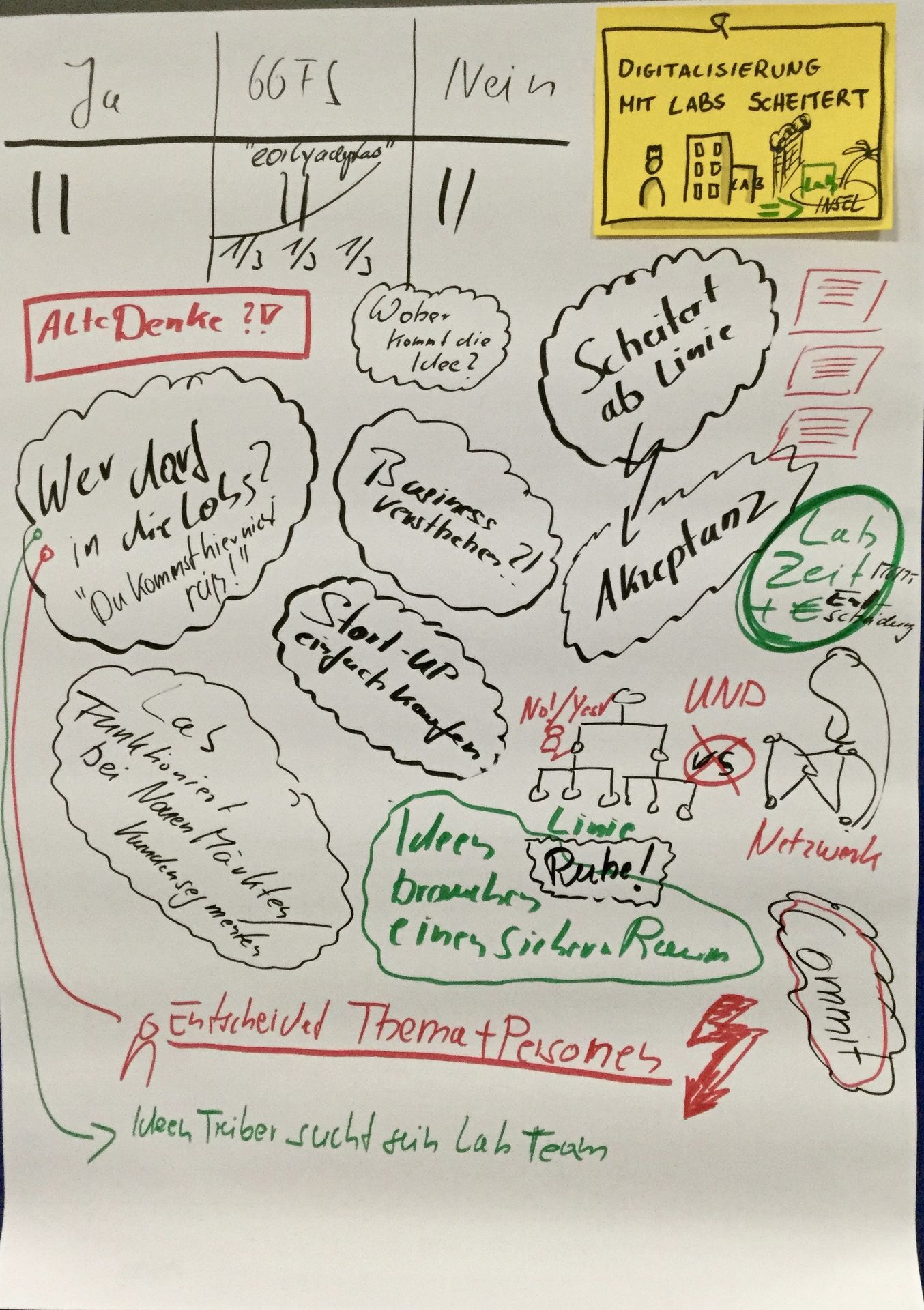
But what do we do with the finished prototype? Does it go back into the organization (line)? Does a lab cease to exist here? If we answer yes to these questions, we are faced with a challenge. Since a lab has all the employees necessary to realize the idea, a cross-functional team, there is no unit in organizations that offers this. Our organizations are specialized in specialist areas and cross-functional teams do not exist in such a line organization. As a result, nobody wants to adopt the prototype that has been developed.
Digitization fails at the line
In another group, the thesis that digitalization fails at the line was explicitly discussed. The results of both groups show that the theses are closely linked.
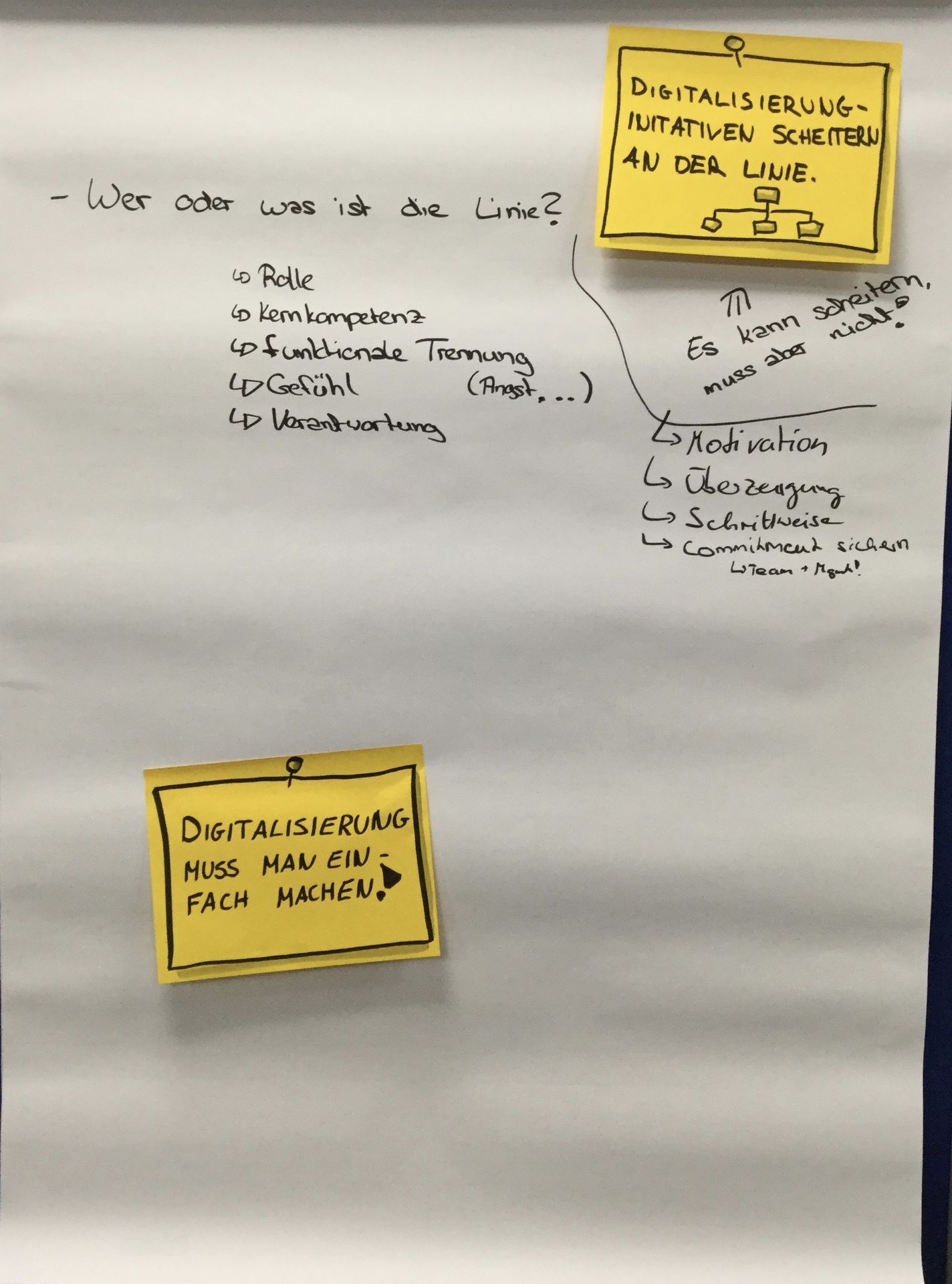
In this group, too, the result was that successful digitalization depends above all on the conviction and motivation of the people implementing it.
Digitization ONLY works with your own employees
Regardless of whether the boss or the employees want to drive digitalization, a visionary with a concrete idea is always needed. If they succeed in inspiring and motivating their boss or colleagues with their idea, it is most likely to be implemented with their own people. However, if the idea Fear among the employees e.g. to be replaced, the idea is more likely to fail.
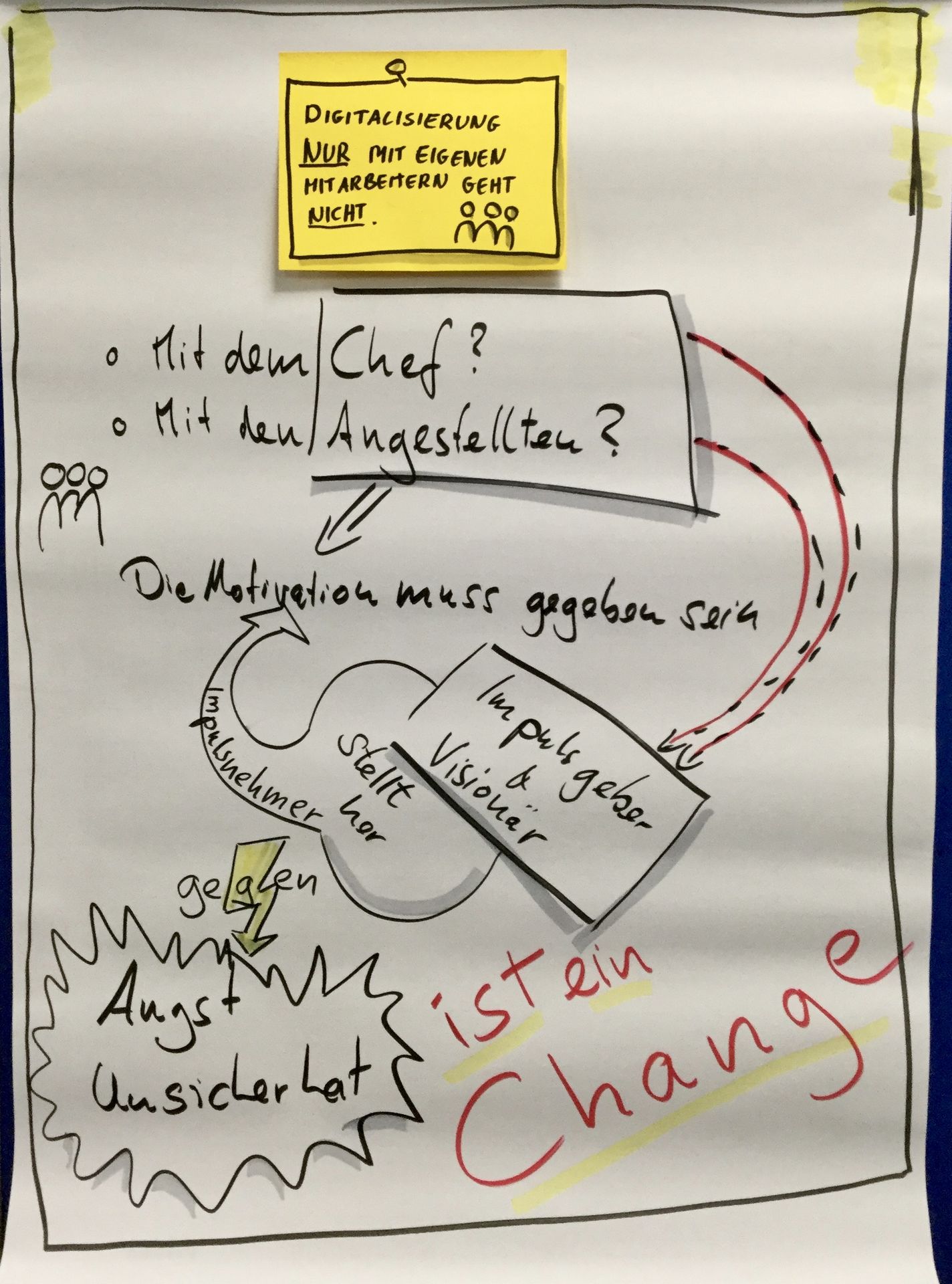
As digitalization changes our behaviour, it is important to understand it as a change and to accompany it as such.
Are digitalization and innovation culture equivalent?
This group also started by discussing what digitalization actually is. Is it just a buzzword? The consensus was that digitalization has been around for years and is an ongoing process. The entrepreneurial goal of saving costs and optimizing processes is also present in this topic. At the same time, we noted that digitalization does not always have to be innovative and is not new.
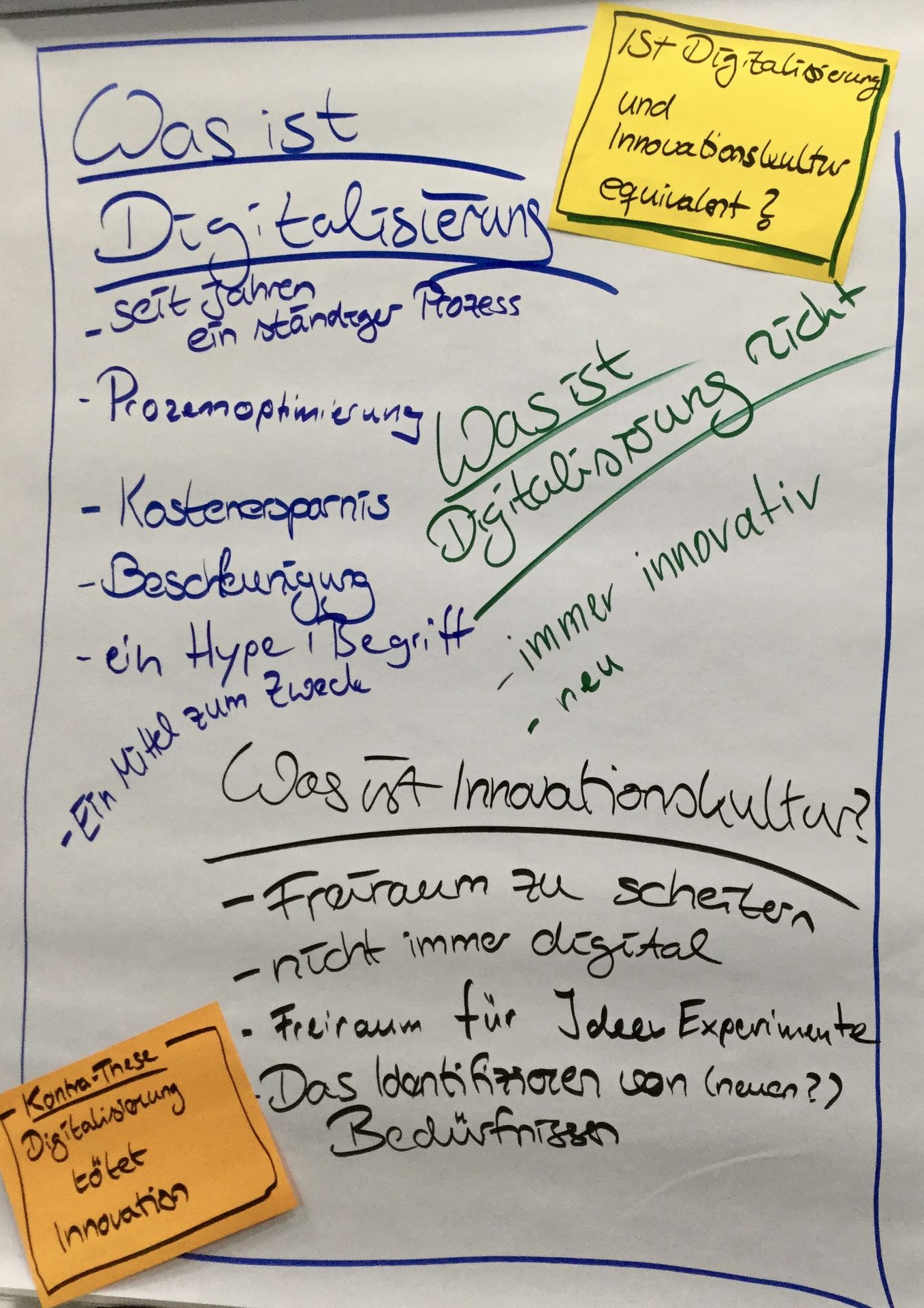
We define a culture of innovation as a free space for ideas and experiments and, associated with this, a Culture in which it is okay to fail.
But if we understand digitalization as a sustainable change in behaviour through a new product that has an interaction between people and technology - don't we also need a culture of error? Or does digitalization kill innovation?

Comments
Write a comment